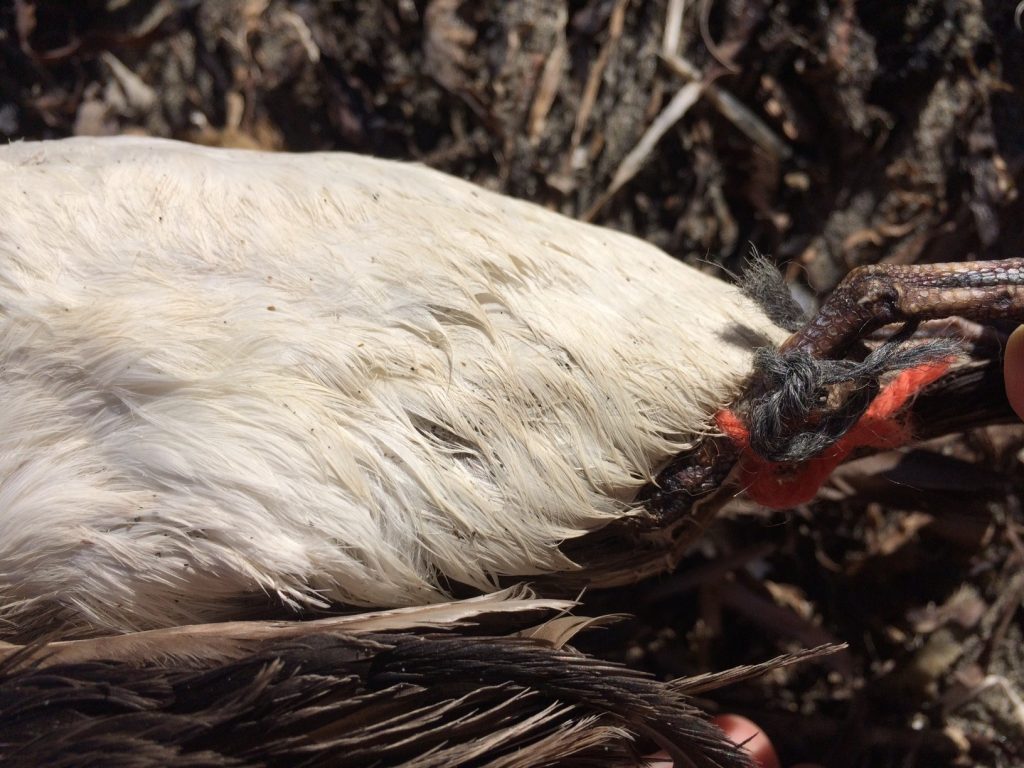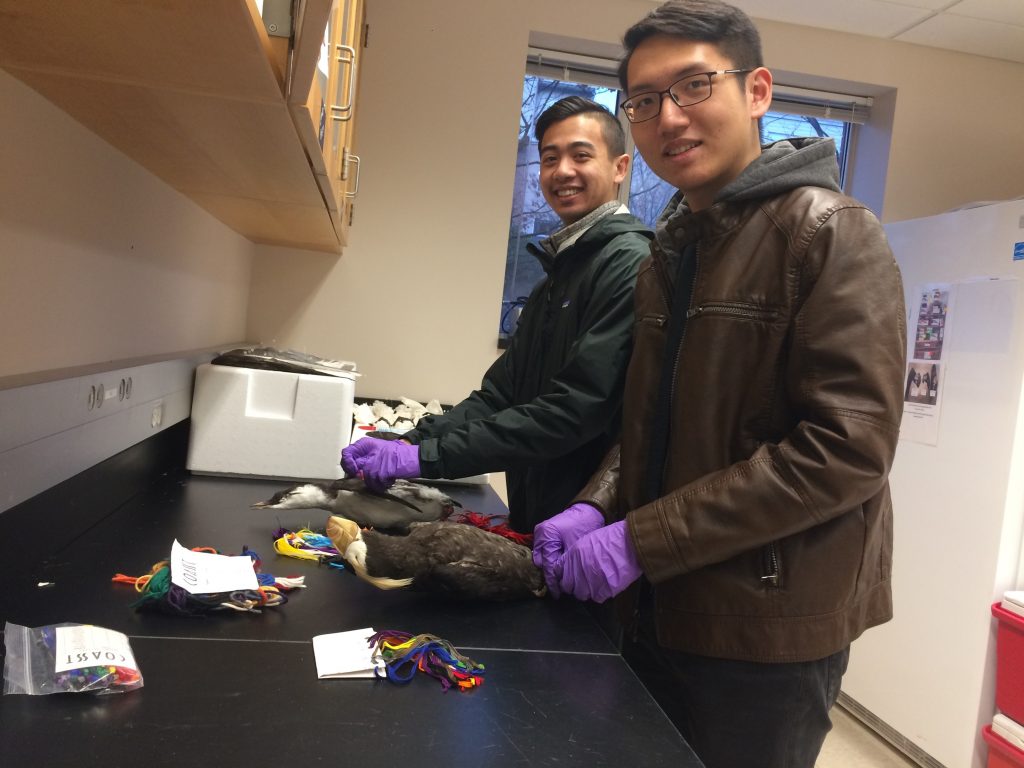We need your input! COASST is looking for a new way to track individual birds over time — an alternative to plastic cable ties.
Why do we track individual birds anyway? Tagging prevents re-counting a bird on subsequent surveys as though it were a “new” find, and allows us to document re-find rates, persistence, and scavenging of individual carcasses—all pieces of information that are used to estimate deposition and mortality of birds given what was encountered during surveys.

Colorful wool yarn can form a sequence similar to zip ties that stays in order when tied as shown above.
The effort to identify a new tagging solution was catalyzed by a letter and sample wool yarn kit from Mendocino COASSTer Deb. For the past year, COASSTers on the Kenai Peninsula (AK) and near Sequim (WA) (communities that were especially eager to use a new material) have been testing and providing feedback on kits modeled after Deb’s.

This bird was re-found three months after originally tagged—with the yarn still readable as “orange, grey”
Initial result: yarn provides the right balance of durability and readability, but is quite difficult to apply with gloved hands and in windy conditions.
We’re not yet convinced that transitioning to yarn COASST-wide will work, and are hoping to identify a system that is environmentally responsible and practical on the beach.
Actually, the solution needs to meet a few criteria:
- Easy to source
- Inexpensive–we tag thousands of birds a year
- Unique-ability
- How can we distinguish one tag from other tags? (e.g. color, number, writing)
- Durability—lasting but not forever
- Unique and “readable” for at least 6 months, and doesn’t fall off easily
- Easy to use in COASST survey conditions (windy, damp, cold hands, gloves)
- Low environmental impact– what happens to the material after the bird is fully decomposed and washed away?
- Biodegradable
- Not mistaken for food by other animals

Two new interns, Lex (left) and Yunbo (right) have joined COASST to help develop and implement an alternative to cable ties.
Enter Lex and Yunbo, two University of Washington Program on the Environment Students who are taking on this challenge for their senior capstone project. The duo will be evaluating potential materials over the upcoming winter quarter.
Right now, they are assembling a list of potential bird tagging materials, and would like to hear from you!
If you have an idea in addition to the starting list below, contacts for potential manufacturers, sources of potential solutions OR If you have an interest in trialing materials that pass the Lex and Yunbo test…
please leave a comment on this blog or contact us by email at coasst@uw.edu with subject: BIRD TAGGING SOLUTION
We will be ordering samples before the start of winter quarter (next week)—so please send us your thoughts as soon as possible!
Below is the current list.
Most promising ideas:
- Colored hemp twine – natural material that biodegrades, but stiffer and potentially easier to use than yarn
- Colored waxed cotton yarn – stiffer and potentially easier to use than un-waxed yarn
- Biodegradable flagging tape – comes in different colors, easy to tie
Ideas with obvious draw-backs:
- Sci-Ties – biodegradable cable ties that have been patented but are not yet in production
- Pipe Cleaners – colorful options are made of plastic. Cotton comes in only one color. May not stay on bird
- Wikki Stix – made of synthetic fiber, heavily coated with food grade wax — may last too long in the environment
- Paper Twist Ties – have a small metal wire center and have a paper covering. The paper would most likely degrade sooner than 6 months and would leave a metal wire
- Metal Tags – tags with pre-stamped number sequences are available from a variety of sources but are cost prohibitive
- Nail Polish – would be difficult when wet and rainy and would require feet. The applicator may get contaminated with sand etc.
- Dyes/paint – messy, may/may not be durable, expensive
- Compostable Stickers – will most likely not stick due to sandy or gritty surface of birds
